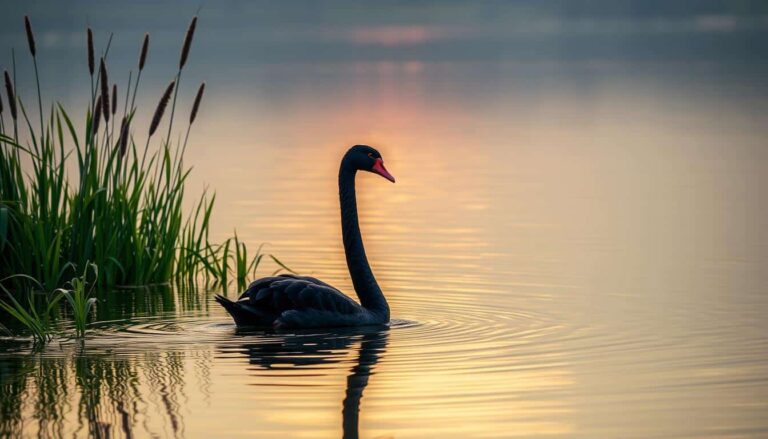Kingfisher Bird: A Complete Guide to This Stunning Hunter
The kingfisher bird is one of nature’s most remarkable hunters, known for its precision and unique hunting methods. With a striking appearance, this small yet powerful bird has captivated birdwatchers and nature enthusiasts around the globe. From their vibrant plumage to their sharp hunting skills, kingfishers are not just beautiful to observe—they are fascinating creatures with specialized adaptations that help them thrive in various habitats.
This complete guide will walk you through everything you need to know about the kingfisher, from its habitat and physical traits to its hunting behavior, species diversity, and conservation challenges.
Key Takeaways
- Kingfishers are famed for their sharp hunting skills, primarily targeting fish.
- These birds are commonly found near rivers, lakes, and wetlands but inhabit coastal and urban areas.
- Kingfishers with over 90 species globally showcase an impressive range of colors and sizes.
- The kingfisher population is threatened by habitat destruction and environmental changes.
- Kingfishers are as remarkable in their mating and nesting behaviors as they are in their hunting prowess.
Habitat and Distribution of the Kingfisher Bird
Overview of Global Habitat
Kingfishers are found across various regions worldwide, particularly in areas rich in water sources such as rivers, lakes, and wetlands. They inhabit all continents except Antarctica, with high concentrations in Asia, Africa, and Oceania. These areas provide the ideal environment for kingfishers to thrive due to the abundance of fish and insects, their primary food sources.
Common Habitats
While rivers, lakes, and wetlands are the most common habitats, some species have also adapted to living in coastal regions and even urban environments. Kingfishers have been spotted in gardens and parks, where birdwatchers can observe them perched on trees or hunting around ponds. Water sources are crucial in their distribution, as kingfishers rely heavily on them for hunting and nesting.
Climate Preferences and Migratory Patterns
Kingfishers are generally found in temperate and tropical regions, where water bodies remain accessible throughout the year. However, in colder climates, some species migrate to warmer regions during winter to maintain access to unfrozen water sources.
Physical Characteristics of Kingfisher Birds
General Appearance
One of the most striking features of the kingfisher bird is its bright plumage, which often features a combination of vibrant colors such as blue, green, and orange. These bold colors help them stand out in their environment, and each species has its own distinctive pattern. The Common Kingfisher, for example, is known for its blue-green back and orange underparts, while the Pied Kingfisher sports a black-and-white pattern that blends well into its environment.
Color Variations and Size Differences
Across the over 90 species of kingfishers, the colors, sizes, and shapes vary significantly. Some are small, like the Azure Kingfisher of Australia, while others, such as the Giant Kingfisher of Africa, can reach impressive sizes. Wing shapes also differ, with some species having broader wings for better maneuverability over water while others have more pointed wings for rapid dives.
Beak Shape and Its Role in Hunting
A kingfisher’s beak is one of its most defining features. These long, sharp, and pointed beaks are perfectly adapted for hunting fish and other prey. Their specialized shape allows kingfishers to pierce the water without creating a splash, ensuring a quick and precise catch.
| Species | Size | Weight | Colors |
|---|---|---|---|
| Common Kingfisher | 16-18 cm | 34-46 g | Blue-green, orange |
| Pied Kingfisher | 25-30 cm | 70-100 g | Black and white |
| Azure Kingfisher | 17-19 cm | 29-32 g | Deep blue, orange |
Kingfisher’s Hunting and Feeding Habits
Diet
Kingfishers are known for their fish-based diet, but many species also feed on other prey, including insects, crustaceans, and amphibians. Their ability to adapt their diet based on the availability of food sources is one of the reasons they can thrive in such diverse environments.
Hunting Strategy
The hunting technique of a kingfisher is a true marvel of nature. Perched high above the water on a branch or rock, a kingfisher waits patiently until it spots its prey. Once sighted, it plunges into the water with lightning speed, using its long, sharp beak to catch the fish. Their precision is aided by excellent vision and an ability to judge depth, allowing them to strike accurately.
Hunting Techniques in Different Species
Different species of kingfishers have developed unique hunting methods based on their environments. For example, the Pied Kingfisher hovers over the water before diving, while the Azure Kingfisher prefers to hunt from perches. These adaptations allow each species to optimize its hunting efficiency.
Kingfisher Bird Species: A Global Look
Overview of the 90+ Species
With over 90 species spread across the globe, kingfishers exhibit an incredible diversity in appearance, behavior, and habitat preference. From the tropical forests of Southeast Asia to the rivers of Africa and the coastal regions of Australia, kingfishers have adapted to various ecosystems.
Prominent Species
- Common Kingfisher: Found in Europe and Asia, this species is perhaps the most recognizable with its vibrant blue and orange feathers.
- Pied Kingfisher: Native to Africa and Asia, the Pied Kingfisher is unique for its black-and-white plumage and hovering hunting style.
- Azure Kingfisher: Residing in Australia, this small species is known for its striking blue and orange colors and fast, darting hunting method.
Regional Differences in Species
While some species are widespread, others have more limited ranges, such as the Laughing Kookaburra of Australia, which is known for its distinctive call. These regional differences highlight the adaptability of the kingfisher family.
| Species | Region |
|---|---|
| Common Kingfisher | Europe, Asia |
| Pied Kingfisher | Africa, Asia |
| Azure Kingfisher | Australia |
Kingfisher Mating and Nesting Behaviors
Mating Rituals
Kingfishers are known for their elaborate mating displays, which often include calls, flight performances, and food gifting. These rituals are not just about attracting a mate but also about establishing strong bonds between the pair.
Nesting Habits
Kingfishers are burrow nesters, digging tunnels into riverbanks where they lay their eggs. These burrows can be quite deep, protecting the young from predators and the elements.
Parental Care
Both male and female kingfishers participate in the care of their young. Once the eggs hatch, the parents hunt and bring food back to the nest. This shared responsibility ensures the survival of the chicks until they are old enough to fend for themselves.
Conservation Status: Threats Facing Kingfisher Birds
Overview of Conservation Status
While many kingfisher species have stable populations, others face significant threats due to habitat loss, especially the destruction of wetlands and water contamination. The alteration of riverbanks and the pollution of water bodies directly impact their ability to hunt and nest.
Human Interference
Urbanization and agricultural expansion have led to the fragmentation of kingfisher habitats. Furthermore, water contamination from industrial runoff and pesticides is a growing concern for many species.
Conservation Efforts
Conservation organizations and governments are working to protect kingfisher habitats through reforestation efforts, the restoration of wetlands, and the implementation of cleaner water practices. Birdwatching communities also play a role by raising awareness about the threats kingfishers face.
Interesting Facts About Kingfisher Birds
- Vision: Kingfishers have specialized vision that allows them to see clearly both above and below water, helping them spot prey with incredible accuracy.
- Symbolism: In many cultures, the kingfisher symbolizes peace, prosperity, and good luck. It is revered for its beauty and grace.
- Speed: Kingfishers can dive at speeds of up to 25 miles per hour, making them one of the fastest diving birds.
| Fun Facts | Details |
|---|---|
| Fastest Dive | 25 miles per hour |
| Nesting Depth | Up to 3 feet into riverbanks |
| Symbolism | Peace, prosperity, good luck |
Read More🐦Related Articles:
| Types Of Hawks Around The World |
| Biblical Meaning Of Dead Birds |
| Can Ducks Eat Cucumber Safely |
| Two Birds on a Wire Meaning |
| Spiritual Meaning of Dead Birds |
Frequently Asked Questions
Q1. What do kingfisher birds eat?
Kingfishers primarily eat fish but consume small amphibians, insects, and even crustaceans.
Q2. How fast can a kingfisher bird fly?
Some kingfishers can reach speeds of up to 25 miles per hour while hunting.
Q3. Are kingfishers endangered?
Some species are threatened due to habitat loss, but others remain widespread and stable.
Q4. How do kingfishers catch fish?
They use their sharp vision to spot fish underwater, then dive from above, using their long, sharp beaks to catch prey.
Q5. Where do kingfishers build their nests?
Most kingfisher species build nests in burrows dug into riverbanks, where they can safely lay their eggs.
Final Words
The kingfisher bird exemplifies nature’s craftsmanship—combining beauty, precision, and adaptability. With a global presence and over 90 species, they continue to thrive despite growing habitat threats. By understanding their behaviors and supporting conservation efforts, we can ensure that these stunning hunters continue to grace our rivers, lakes, and wetlands for generations to come.







